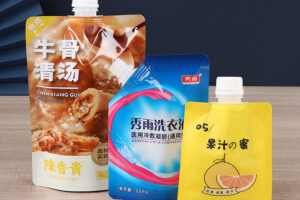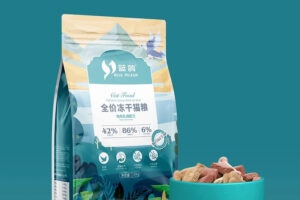Are you curious about the latest innovations in packaging bags? With advancements in technology and growing environmental concerns, the packaging industry is continually evolving. Staying updated on these innovations can help businesses improve efficiency, reduce environmental impact, and enhance product appeal.
The latest innovations in packaging bags include biodegradable materials, smart packaging, sustainable inks, and advanced barrier properties. These innovations aim to address environmental concerns, improve product preservation, and enhance consumer convenience. By adopting these new technologies, businesses can stay ahead of the competition and meet the evolving demands of their customers.
Keeping readers interested is crucial. Let’s dive into these innovations and explore how they can benefit your business.
How Are Biodegradable Materials Revolutionizing Packaging Bags?
Biodegradable materials are one of the most significant innovations in packaging. These materials break down naturally over time, reducing environmental impact.
Biodegradable packaging bags are made from plant-based polymers, starch blends, and compostable plastics. They decompose under natural conditions, minimizing plastic pollution and conserving resources. Businesses adopting these materials demonstrate a commitment to sustainability and appeal to eco-conscious consumers.
What Is Smart Packaging and How Does It Work?
Smart packaging incorporates technology to enhance the functionality of packaging bags. This innovation includes features like QR codes, RFID tags, and sensors that monitor the condition of the product.
Smart packaging provides real-time information about product freshness, temperature, and tampering. Consumers can scan QR codes for detailed product information, enhancing transparency and trust. This technology is particularly beneficial for perishable goods and high-value items.
How Are Sustainable Inks Improving Packaging Bags?
Sustainable inks are another significant innovation. Traditional inks often contain harmful chemicals, but sustainable inks are made from natural ingredients that are safer for the environment.
Sustainable inks are derived from soy, vegetable oils, and water-based solutions. They reduce toxic emissions and are easier to recycle. Using these inks in packaging enhances print quality while supporting environmental goals.
What Are Advanced Barrier Properties in Packaging Bags?
Advanced barrier properties are crucial for preserving the quality of products. These innovations include multilayer films and coatings that provide superior protection against moisture, oxygen, and light.
Barrier packaging uses nanotechnology and innovative coatings to enhance product shelf life. These materials are ideal for food packaging, pharmaceuticals, and sensitive electronics. Improved barrier properties ensure that products remain fresh and safe for longer periods.
How Does Customization Play a Role in Packaging Innovations?
Customization in packaging is becoming more sophisticated with digital printing technologies and personalized designs. These advancements allow businesses to create unique packaging that stands out.
Digital printing offers high-resolution graphics and the flexibility to produce short runs cost-effectively. Personalized packaging enhances brand identity and can include customer-specific information. This innovation helps brands connect with consumers on a more personal level.
What Are the Environmental Benefits of These Innovations?
Innovations in packaging bags significantly reduce environmental impact. From biodegradable materials to sustainable inks, these advancements contribute to a greener planet.
Biodegradable bags decompose naturally, reducing landfill waste. Sustainable inks minimize chemical pollution and improve recycling processes. Advanced barriers reduce food spoilage, leading to less waste. By embracing these innovations, businesses can support sustainability and meet regulatory requirements
How Can Businesses Implement These Innovations?
Implementing these innovations requires a strategic approach. Here are steps businesses can take:
- Research and Select Materials: Identify the latest materials and technologies that align with your sustainability goals.
- Partner with Innovative Suppliers: Work with suppliers who offer cutting-edge packaging solutions.
- Invest in Technology: Equip your production lines with the necessary technology for smart packaging and digital printing.
- Train Staff: Ensure your team is knowledgeable about new materials and technologies.
- Monitor and Evaluate: Continuously assess the performance of new packaging solutions and make improvements as needed.
These steps can help businesses successfully integrate innovative packaging solutions.
What Are the Challenges of Adopting Innovative Packaging?
Adopting innovative packaging solutions comes with challenges. Understanding these can help businesses navigate the transition more smoothly.
Cost: Innovative materials and technologies can be more expensive initially. However, the long-term benefits often justify the investment.
Compatibility: Ensuring new packaging materials are compatible with existing equipment can be challenging. Investing in adaptable machinery may be necessary.
Regulatory Compliance: Staying compliant with evolving regulations on packaging materials and environmental standards is crucial. Working with knowledgeable suppliers can help meet these requirements.
How Do Innovations in Packaging Enhance Brand Perception?
Innovative packaging can significantly enhance brand perception. Consumers increasingly prefer brands that prioritize sustainability and technology.
Eco-friendly packaging demonstrates a commitment to environmental responsibility. Smart packaging adds value through transparency and information. Customized designs create a unique and memorable brand experience. These factors can lead to increased customer loyalty and positive brand recognition.
What Are the Future Trends in Packaging Innovations?
The future of packaging innovations is promising, with several trends on the horizon.
Edible packaging: Made from natural ingredients, this packaging can be consumed along with the product, reducing waste.
Recyclable multilayer films: Innovations are making it possible to recycle complex multilayer films, which were previously challenging to process.
Bio-based plastics: Derived from renewable resources, these plastics offer an alternative to traditional petroleum-based materials.
Interactive packaging: Combining augmented reality (AR) and other interactive elements to engage consumers.
Staying updated with these trends can help businesses stay competitive and meet future demands.
Conclusion
Innovations in packaging bags are transforming the industry, offering solutions that are more sustainable, efficient, and consumer-friendly. From biodegradable materials and smart packaging to sustainable inks and advanced barriers, these innovations provide numerous benefits. By embracing these advancements, businesses can enhance product quality, reduce environmental impact, and improve brand perception. Staying informed and proactive in adopting these innovations will ensure long-term success in the evolving market.






